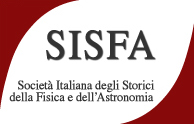Speaker
Description
The present work reconstructs the history of the so-called uncertainty principle, from its first formulation to a recent diatribe on its correct mathematical formalization. In his 1927 paper, Heisenberg proposed two different kinds of uncertainty. One is called “statistical” or “intrinsic”, due to the mathematical structure of quantum mechanics and rigorously demonstrated by Robertson. The second one is called “error/disturbance” or “operational”, and defines the relation between the intrinsic error ε(A) with which a physical quantity is experimentally known and the disturbance η(B) induced by the first measurement on a second, not compatible, physical quantity. The later has never been tested experimentally, nor mathematically demonstrated. The first obstacle in treating the error/disturbance uncertainty is to define what it is meant by "error" and “disturbance", a problem avoided even by Heisenberg. In 2003, Masanao Ozawa proposed a definition of “error” and “disturbance” as the root mean squares of appropriate operators, depending on the initial state of the physical system. From these definitions, Ozawa obtained a universal uncertainty relation, which does allow, in specific cases, the violation of the Heisenberg inequality as expressed in von Neuman’s formalism: $\varepsilon(A)\cdot\eta(B)\ge\frac{1}{2}|\langle[\hat{A}, \hat{B}]\rangle|$. This approach was disputed by Busch, Lahti and Werner, proposing in 2013 a definition of error and disturbance as figures of merit of a measuring instrument, based on the distances of probability distributions. The following debate represents an exemple of clash between competing paradigms and a case of underdetermination of two scientific theories by evidence.

